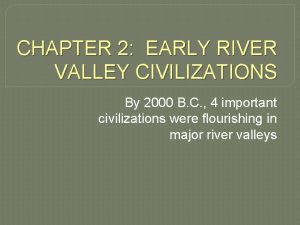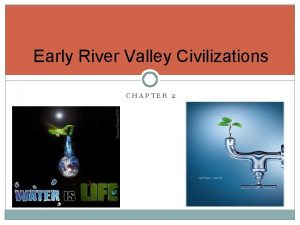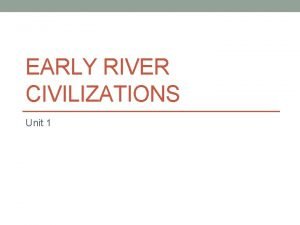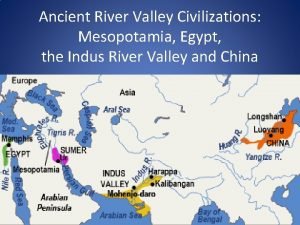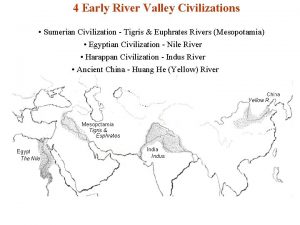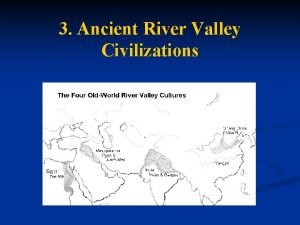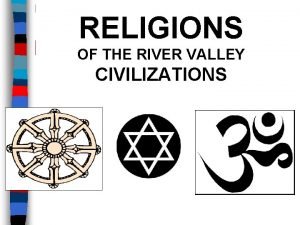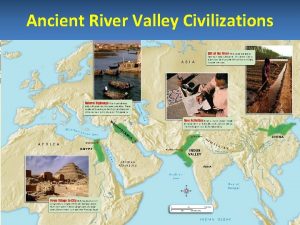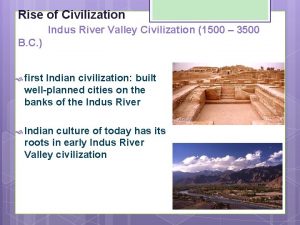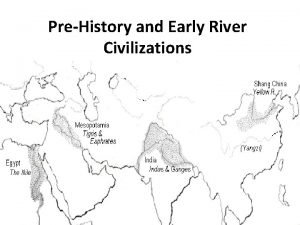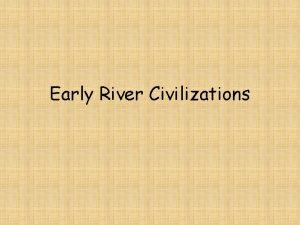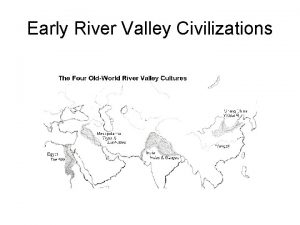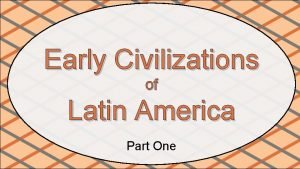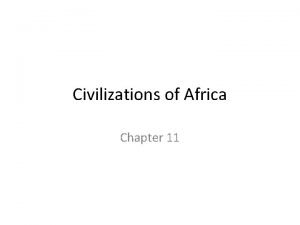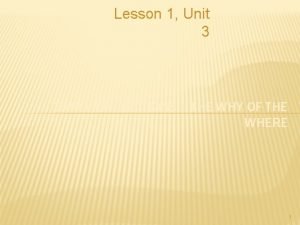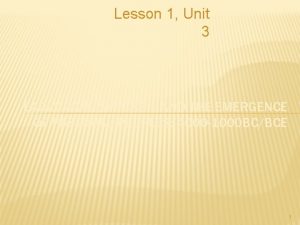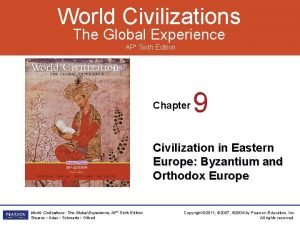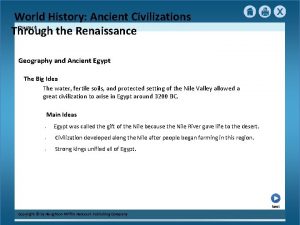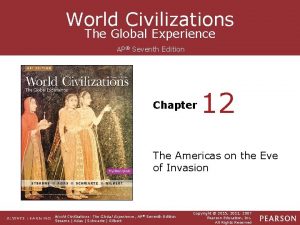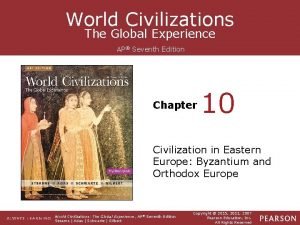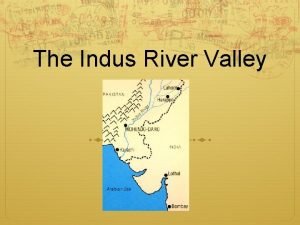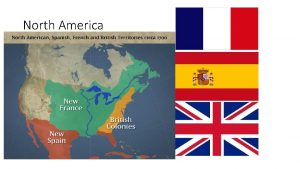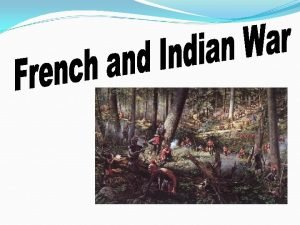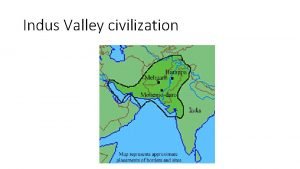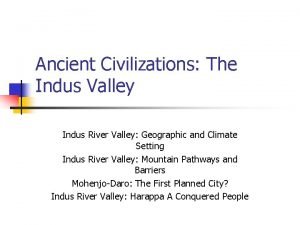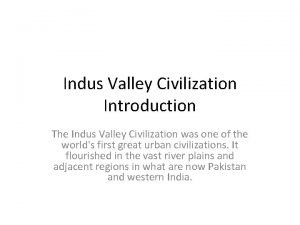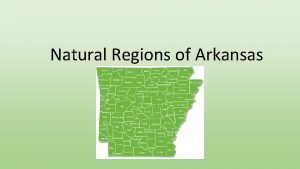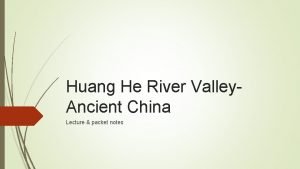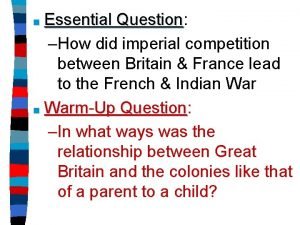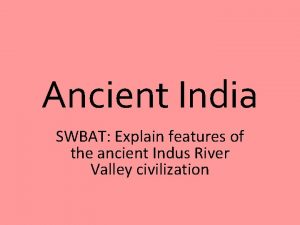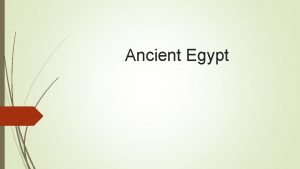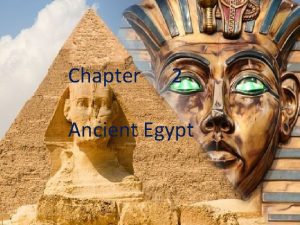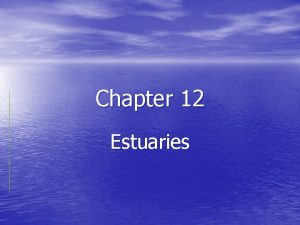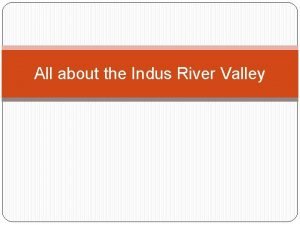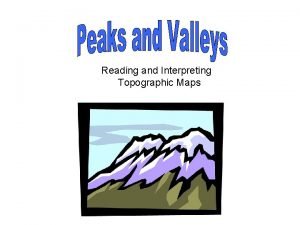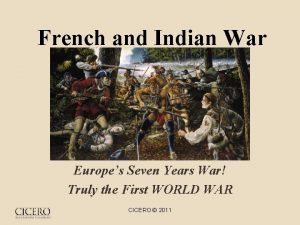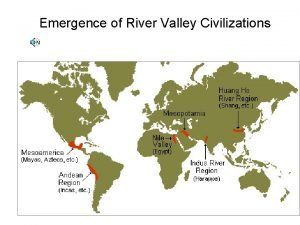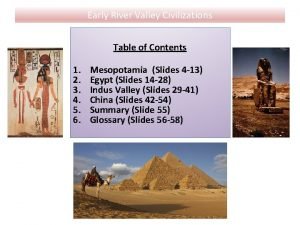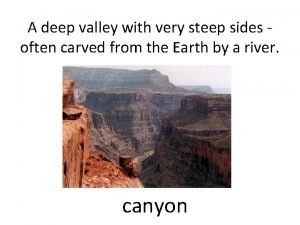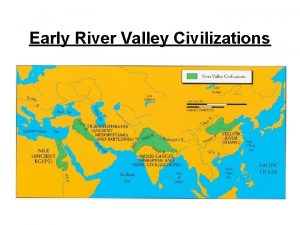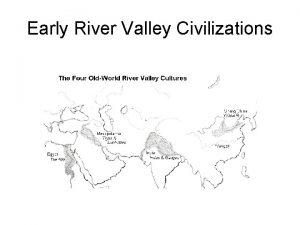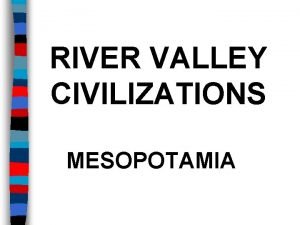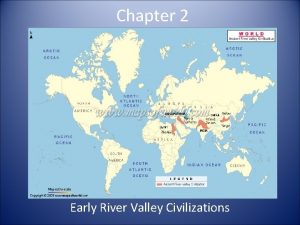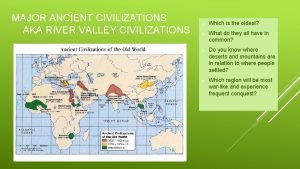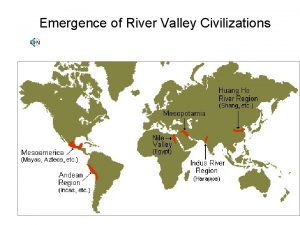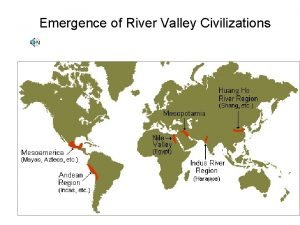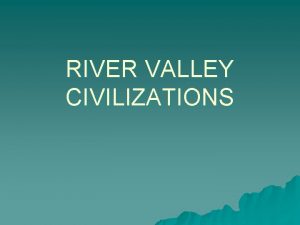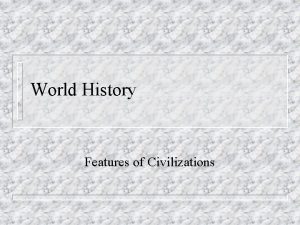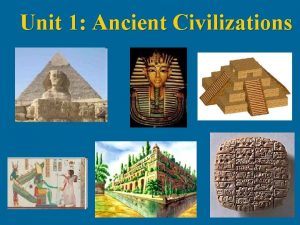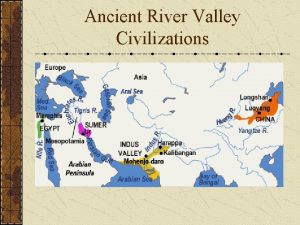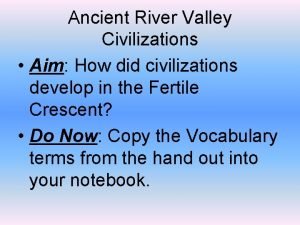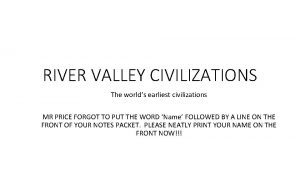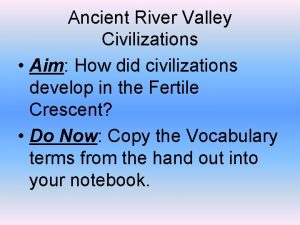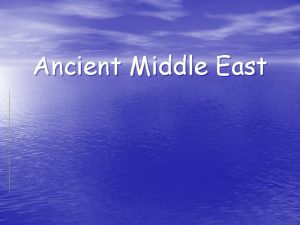Unit 1 EARLY RIVER VALLEY CIVILIZATIONS MAJOR WORLD





















































- Slides: 53

Unit 1 EARLY RIVER VALLEY CIVILIZATIONS MAJOR WORLD RELIGIONS

Standard 1 SSWH 1 The student will analyze the origins, structures, and interactions of complex societies in the ancient Eastern Mediterranean from 3500 BCE to 500 BCE. a. Describe the development of Mesopotamian societies; include the religious, cultural, economic, and political facets of society, with attention to Hammurabi’s law code. b. Describe the relationship of religion and political authority in Ancient Egypt. c. Explain the development of monotheism; include the concepts developed by the ancient Hebrews, and Zoroastrianism. d. Describe early trading networks in the Eastern Mediterranean; include the impact Phoenicians had on the Mediterranean World. e. Explain the development and importance of writing; include cuneiform, hieroglyphics, and the Phoenician alphabet.

Standard 2 SSWH 2 The student will identify the major achievements of Chinese and Indian societies from 1100 BCE to 500 CE. a. Describe the development of Indian civilization; include the rise and fall of the Maurya Empire, the “Golden Age” under Gupta, and the emperor Ashoka. b. Explain the development and impact of Hinduism and Buddhism on India and subsequent diffusion of Buddhism. c. Describe the development of Chinese civilization under the Zhou and Qin. d. Explain the impact of Confucianism on Chinese culture; include the examination system, the Mandate of Heaven, the status of peasants, the status of merchants, and the patriarchal family, and explain diffusion to Southeast Asia, Japan, and Korea. e. Explain how the geography of the Indian Subcontinent contributed to the movement of people and ideas.

Essential Questions 1. How does the Neolithic Revolution contribute to the rise of civilizations?

Exit Ticket-Activator

Neolithic Revolution � Shift from hunting and gathering to “settled” agriculture � Human control of the Environment � Trade � Population Growth � Specialization and formation of classes � Rise of disease

What is a “civilization” anyway? It has FIVE characteristics 1. Advanced Cities 2. Specialized Workers 3. Record Keeping 4. Complex Institutions 5. Advanced Technology


Where were these? Reference Map

What did they have in common? � � � along rivers natural barriers agriculture polytheism afterlife writing � mathematics � social classes � dynasties �

River Valley Civilizations Chart

Mesopotamia � Modern-day Iraq primarily � Along the Tigris & Euphrates Rivers �“Land between the waters” �Fertile Crescent � Polytheistic-belief in more than one god �built large temples call ziggurats

Mesopotamia


Mesopotamia Form of Writing: Cuneiform development as a pictograph language

Cuneiform Writing

Science/Technology � wheel, sail, plow � irrigation � bronze � calendar – 12 mo. / 30 days

Mesopotamia � Government: Based on dynasties �Dynasty: power remaining in one family; passed down to the next male heir � Main cities �Ur – Sumerian city �Babylon (later capital of Mesopotamia) � Not really kingdoms—city-states, cities that controlled surrounding areas � Controlled by various kingdoms that built empires �Empire: bringing together multiple locations/dynasties under one rule �Sumerian, Akkadian, Babylonian, Assyrian, Persian, Macedonians, Romans, Turks, Mongols, British, etc.

Sumerian Religion--Polytheistic ANTHROPOMORPHIC GODS—HUMAN-LIKE

Sargon of Akkad—World’s First Empire

Mesopotamia Ur was a busy trade center before the Persian Gulf shore formed further downstream. In the background is the Great Ziggurat. The Torah states that Ur was Abraham’s birthplace and where he left with his family for Canaan.

Mesopotamia Babylon ruins in 1932 and rebuilt ruins in 2003

Code of Hammurabi � Hammurabi-leader of Babylon � World’s first written code of law �The law was engraved onto pillars which were located in public places for all to see. Of course, it would help to be able to read them…. most people couldn’t read. � Very Harsh: “An Eye for an Eye”

Read Code of Hammurabi

Write Your Own Hammurabi’s Code � Partner Activity � Update today’s laws using Hammurabi’s style � 10 Laws � Upload to Schoology

Unit 1 Scrapbook Partner Activity � Keynote � Create a scrapbook style page covering Mesopotamia � �Pictures and Captions � Include: �Polytheism �Tigris and Euphrates Rivers �Dynasties and Empires �Cuneiform �Code of Hammurabi

Ancient Egypt

Review � Mesopotamia �Relate to Hammurabi’s Code and our own law code

Egypt Rap � http: //www. creagdhu. net/Pages/WH_An cient_Egypt. aspx

Egypt Today

Geographical features � Nile River �Flows northward �Delta empties into the Mediterranean Sea Surrounded by desert � Climate � �hot, dry summers with moderate winters Settlements / buildings • mud brick buildings • limestone pyramids

Nile River The Nile River has played an extremely important role in the civilization, life and history of the Egyptian nation: �extremely fertile soil �annual spring floods, �a source of drinking water �source of irrigation for farming �papyrus reeds that could be used for a variety of purposes such as paper and building materials.

Important Cities • Memphis • Thebes • Alexandria • Cairo Economic life • agriculture • river trade

Science / technology • canals • medicine • mathematics, geometry • Papyrus Social Classes 1. pharaoh 2. land owners, priests, govt officials, generals 3. merchants, artisans 4. peasants 5. slaves

River Civilizations Chart. Egypt � 15 Minutes

“You can't take it with you - or can you? “ � Class Discussion � When people say, "You can't take it with you, " what do you think they mean? � How does the meaning of the quote change when you add "- or can you?

Religion and Leaders Pharaohs: Egyptian kings worshipped as gods and thought to have god-like powers � Religion: Polytheism � � Famous Pharaohs: � Ramses II- He is probably the most prolific of the ancient Egyptian pharaohs ○ Ruled for 67 years ○ had over 100 children with more than a dozen wives ○ Built more temples and statues than any of the other ancient Egyptian pharaohs � King Tut ○ Curse of King Tut’s tomb

RAMSES II

RAMSES II

Hapshepsut’s Temple

Temple of Thutmose III

Mummification and Pyramid � Mummification Process �Preparing the body for the after-life � Pyramid �Burial site of the pharaohs

Pyramids at Giza and the Sphinx

The Great Pyramids at Giza

Mummification Game � http: //discoverykids. com/games/mummy -maker/ � http: //oi- archive. uchicago. edu/OI/MUS/ED/mum my. html

Create Your Own Tomb-15 minutes � You are the architect/artist in charge of designing the pyramid/tomb of your pharaoh � Use Notability-Partner Assignment � Your tomb must include: �Picture of your Pyramid �Tell the story of your pharaoh’s life in pictures �Items your pharaoh will need in the afterlife �Burial Mask �Canopic Jars

Communication � BTW; OMG; HRU; G 2 G; LOL; TTYL Where might you see the types of messages that appear on the board/overhead? � What makes this type of communication different from the normal written word? � Why do people use this form of communication rather than writing complete words and sentences? � What are the advantages of using this type of communication? �

Hieroglyphics � Egyptian form of writing

Your Name in Hieroglyphics � http: //www. pbs. org/empires/egypt/specia l/hieroglyphs/name_spell. html

Exit Ticket-Hieroglyphics On the bottom of your tomb drawing, answer this question in Egyptian Hieroglyphics � Use the Hieroglyphics alphabet on the next slide � 2 sentences at most � Below your answer, translate your hieroglyphics in to English � � Question: How are religion and politics/government linked in ancient Egypt? � Submit to Schoology under Egypt Activity


Egypt Rap � http: //www. creagdhu. net/Pages/WH_An cient_Egypt. aspx

Unit 1 Scrapbook � Add Egypt to your Keynote Scrapbook �Pictures and Captions � Include: �Polytheism �Mummification �Pharaohs �Pyramids �Nile River �Hieroglyphics
 Chapter 2 early river valley civilizations
Chapter 2 early river valley civilizations Chapter 2 early river valley civilizations
Chapter 2 early river valley civilizations Map of river valley civilizations
Map of river valley civilizations Ancient river valleys map
Ancient river valleys map River valley civilization map
River valley civilization map 4 river valley civilizations
4 river valley civilizations What is believed to be the 1 stdynasty of ancient china?
What is believed to be the 1 stdynasty of ancient china? Which cultures believe in reincarnation
Which cultures believe in reincarnation Ancient river valley civilizations powerpoint
Ancient river valley civilizations powerpoint Seasonal winds that dominate india's climate
Seasonal winds that dominate india's climate River valley civilizations map
River valley civilizations map River valley civilizations vocabulary
River valley civilizations vocabulary Indus river valley job specialization
Indus river valley job specialization Tigris euphrates and nile river
Tigris euphrates and nile river 4 river civilizations
4 river civilizations Inca diorama
Inca diorama Chapter 9 lesson 1 early civilizations
Chapter 9 lesson 1 early civilizations Chapter 11 section 1 early civilizations of africa
Chapter 11 section 1 early civilizations of africa Machu picchu and mesa verde similarities
Machu picchu and mesa verde similarities Lesson 1 early civilizations
Lesson 1 early civilizations Unit 3 lesson 1 sumer and mesopotamia
Unit 3 lesson 1 sumer and mesopotamia World civilizations the global experience ap edition
World civilizations the global experience ap edition World civilizations the global experience 7th edition
World civilizations the global experience 7th edition Ancient civilizations through the renaissance
Ancient civilizations through the renaissance Twantinsuyu
Twantinsuyu World civilizations the global experience 7th edition
World civilizations the global experience 7th edition Ganges river valley
Ganges river valley Pinckney's treaty
Pinckney's treaty Ohio river valley 1763
Ohio river valley 1763 Indus river valley hinduism
Indus river valley hinduism Proto siva
Proto siva Indus river valley
Indus river valley Indus era
Indus era Bristol pediatric
Bristol pediatric East river valley religion
East river valley religion River valley community college
River valley community college Regions of arkansas
Regions of arkansas Hwang ho river civilization
Hwang ho river civilization Ohio valley river
Ohio valley river Indus river valley dbq
Indus river valley dbq Ancient egypt advanced cities
Ancient egypt advanced cities River valley
River valley Drowned river estuary
Drowned river estuary Indus valley gender roles
Indus valley gender roles Ohio river valley
Ohio river valley River valley primary school
River valley primary school Hachure lines topographic map
Hachure lines topographic map River valley community college nursing
River valley community college nursing Did william pitt open the ohio river valley
Did william pitt open the ohio river valley River valley pediatrics
River valley pediatrics River valley
River valley Indus river valley civilization cloze reading
Indus river valley civilization cloze reading A deep valley with steep sides made of rock
A deep valley with steep sides made of rock Green river (duwamish river tributary)
Green river (duwamish river tributary)
